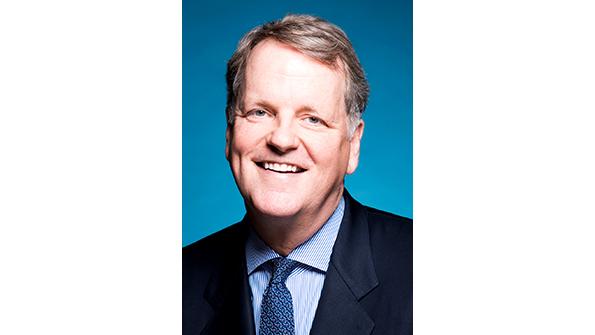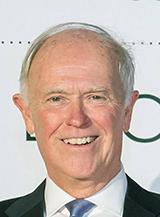CAPA LIVE: A Recap Of Key Insights

The COVID-19 pandemic has caught the entire industry off guard. While air transport has faced numerous previous crises, the fact that subsequent recoveries occurred at different rates had led to complacency and ill-preparedness for an event of such magnitude.
“Initially when we started on this horrible expedition, there was an assumption it would be over in six months. Governments thought so as well but it's obvious now that won't be the case,” CAPA chairman emeritus Peter Harbison said 2020 at the inaugural CAPA Live event in October.
“Initial priorities, which involved government subsidy of one form or another and airlines raising debt and equity, have now been overtaken, as the cash bleed will continue well into 2021. This is a big downturn, beyond comprehension, and a vaccine won't have a widespread impact at least before the middle of 2021,” Harbison warned.
“Consumer confidence will be a key part of recovery; if consumers don't come back, then obviously there is no industry. Finding a uniform formula is key but still remains elusive.”
It is clear that travel and air transport will remain subdued through 2021 and into subsequent years, and the industry needs to come to terms with the new landscape. But within this space, there are pockets of demand that can support those that are adaptable and accept a changed world in which leisure demand dominates and business travel remains near dormant.

There has been much talk about the post-COVID industry reverting to the profile of the 1970s, with reduced traffic levels, the prospect of more active government intervention, smaller networks and higher prices. But in two very important ways the real comparison timeframe is the 1930s.
There are important lessons to be learned from industry and government behavior 90 years ago. World War I had spawned the multilateral Paris Convention of 1919, which established that every state had absolute sovereignty in the airspace over its territory. That meant all borders were closed to foreign aircraft, until they were opened.
Secondly, in the early barnstorming days of aviation, the biggest inhibitor of commercial air travel expansion was safety. There was an uncomfortable tendency for airliners to crash, a feature that would-be passengers found undesirable. Aside from the cost of flying and the lack of comfort—two characteristics that once again emerge in the industry’s current condition—people were unwilling to embark on such dangerous missions.
Today, like the 1930s, most borders are effectively closed and, despite some pent-up leisure demand, there is widespread reluctance to fly, for health safety reasons.
It took until after World War II and the Chicago Convention for the logjam to be broken. In 1944, under the leadership of the US and the UK, senior aviation officials from all over the world met to agree a new regime. Today, there is little sign of similar leadership emerging in the near term.
Australasian markets are being hampered by COVID-19 spikes that slow the road to recovery.
Australian Airports Association CEO James Goodwin, a panelist during CAPA Live, said he believed the Australian government had taken the “right approach” toward the “health crisis,” but noted air travel was still the “lowest” since consistent records began.

Goodwin said airports have many fixed costs, but noted that despite losses, “the airports have stayed opened” and remained “good corporate citizens.”
Goodwin acknowledged that Australian airports were losing more than AUD300 million ($215 million) per month, a “quite devastating” impact, and that air travel was “likely” to be one of the last sectors to recover from the coronavirus crisis. In his eyes, the outlook was still “very grim” and “we still need some timeframes” regarding state border reopenings and safe travel zone bubbles.
Brisbane Airport executive general manager, aviation development & partnerships Jim Parashos said what was needed regarding increased aeronautical operations and biosecurity measures was collaboration with health officials “to get them to better understand the operating environment” of airports.
Parashos said Australia's domestic terminals “are very much meant to be transit points,” and Brisbane Airport's own concourse, which could previously handle six or seven simultaneous arrivals, was now able to handle two.
Recognizing the much greater value that international passengers delivered to airports and that they would not be back soon, Parashos accepted that the airport would “take whatever we can get” between domestic and international revenue generation in the coronavirus environment. He believed that until “we can sort out our domestic border issue,” it was very difficult to see anything beyond the trans-Tasman Australia-New Zealand bubble reopening.
Morgan Stanley analyst Rob Koh said that once some confidence builds from the trans-Tasman bubble, Australia “could have some Pacific Island friends join.”
“I'd like to think Australia and Singapore could also start a travel bubble, and this would be at the same time and not mutually exclusive,” he said.
Asia Pacific Airlines Association (AAPA) director general Subhas Menon said, “Singapore is taking a very enlightened position when it comes to international travel; most governments are taking a view of deferred gratification, saying: ‘let’s address domestic sectors before we start looking at cross border travel.’
“Singapore has taken a risk-based approach; they are embarking on policy to negotiate travel bubbles, but unfortunately they are alone in this endeavor.”
Jetstar Asia CEO Bara Pasupathi said the Singapore government understood the importance of airlines and the effect they have on the economy because Singapore is 100% reliant on international travel and transit.
“They have been brilliant in supporting us and have also had some very smart initiatives,” Pasupathi said of the Singapore government.
BIS Oxford Economics chief Australia economist Sarah Hunter pointed out that because tourism was a “substantial proportion” of the labor force, it was not surprising that job losses were concentrated in this area and that returning to normal would require a vaccine or the ability to “work out” how to live with coronavirus.
In a keynote address, Corporate Travel Management (CTM) executive director and managing director Jamie Pherous said he believed rapid COVID-19 testing at airports was “really critical” for restoring traveller confidence.
He said he expected to see “mass consolidation” in the corporate travel supply chain because of the loss of international business.
Another speaker, Informa director custom intelligence & analytics Duncan Emerton, said there had been “significant investment” in resources in response to COVID-19, adding the industry was “setting new standards of collaboration to find a solution and exit strategy.”
Since the beginning of 2020, there had been an exponential increase in trials for drugs that were now in the pipeline with the clinical trial landscape “early in evidence generation” but starting to deliver “reassuring data,” Emerton said. However, it would be some time before a true sustainable solution could be delivered.
Informa head of group health, safety and security Steve Dyson cautioned, “we need to start seeing the pandemic figures falling at a global level and that is still not happening.”
Dyson noted that Asian countries had not seen fatality and case rates as high as those in countries such as the US, India and Brazil.
“This is perhaps due to their experience of recent pandemics that occurred predominantly in Asia and more advanced levels of biosafety and biosecurity at airports and at major events,” he said.
Harbison reinforced how leisure demand, domestic movement and LCCs are leading the return of travel.
In a post COVID-19 world there will be extended government support and there will “inevitably be fewer airlines,” he warned, and those airlines that survive “will be heavily indebted, have lower frequencies, fewer routes and charge higher fares.”
Ultimately, in a market dominated by price-sensitive leisure travellers, “cost will become king again,” he said Already, LCC global market share has grown by over 2% in 2020 and by as much as 5%-10% in some individual markets.
Until border controls are lifted however, international aviation remains tightly constrained and unpredictable Harbison said.
The mere development of bilateral travel bubbles is already proving challenging, even between island partners like Australia and New Zealand; going beyond that will be infinitely more complex until health solutions are found. Furthermore, the recovery will be driven in an environment where the “speed of passenger traffic return will be in inverse proportion to yield,” Harbison noted.
The result will be a very differently shaped industry in the medium term, in which full-service airlines will have to adapt to the loss of premium traffic. Meanwhile, for many airlines, it will be a matter of “how long can they hold their breath,” he said.
Jeff Shane, who retired earlier this year as IATA general counsel, also spoke at CAPA Live. He argued the aviation industry was “going to look a lot like the old normal” post-COVID-19. He explained that the provision of air transportation “will be done in very much the same way. ... The question is how long is it going to take to get there?”
When it comes to guidance and recommendations on responses to air travel and COVID-19, Shane noted, “it’s a discouraging picture because governments are simply not following the advice of those they appointed.”
If protocols for COVID-19 testing could be established consistently and globally, “then governments will trust each other and they would allow flights to happen,” Shane said. “But for as long as there are either closed borders, or quarantine measures which are tantamount to closed borders, we're not going to see anything like the recovery that we expected to see by now.”
His biggest concern was that governments had “become investors of airlines” because bailouts have become forms of equity in airlines.
“There should be some nervousness about that. ... Governments should be sophisticated enough to know that you cannot regulate an optimal air transportation market; the market has to create that,” Shane said.
Meanwhile, some optimism was sounded about the ultimate need for people to meet in person despite their current dependency on technology and virtual meetings.
Eurocontrol director general and former Irish Aviation Authority CEO Eamonn Brennan said he sees a full return of traffic levels by 2024 for both short- and long-haul operations.
“You can't run a world economy based on Zoom. Once you open up the market, people will want to travel. ... Long-haul business travel will recover stronger than you think,” Brennan said.
Still, significant short-term impacts remain evident. European air traffic was at around 40% of 2019 levels as of mid-October, but Brennan warned that this could end up plunging to perhaps below 30% by the end of November as second virus waves and lockdowns struck much of Europe.
He said Eurocontrol was predicting up to a 60% reduction in traffic in the upcoming winter period, with “no improvement in Europe until at least Easter. ... It's going to be that long until the short haul market recovers.”